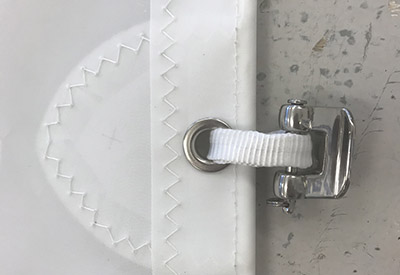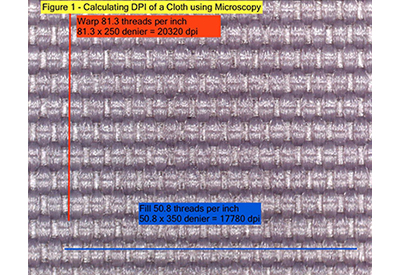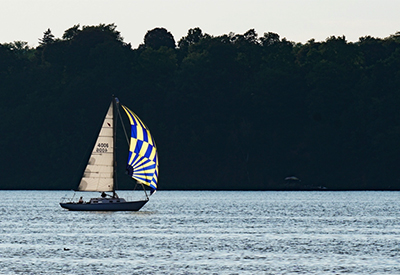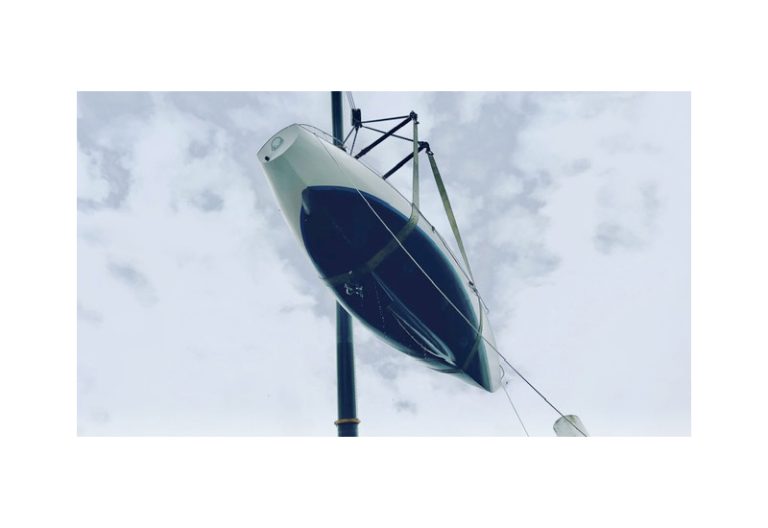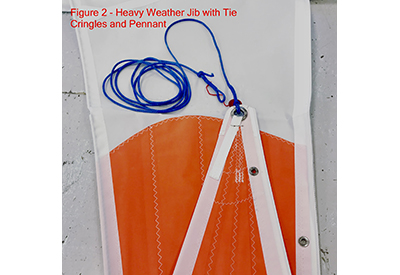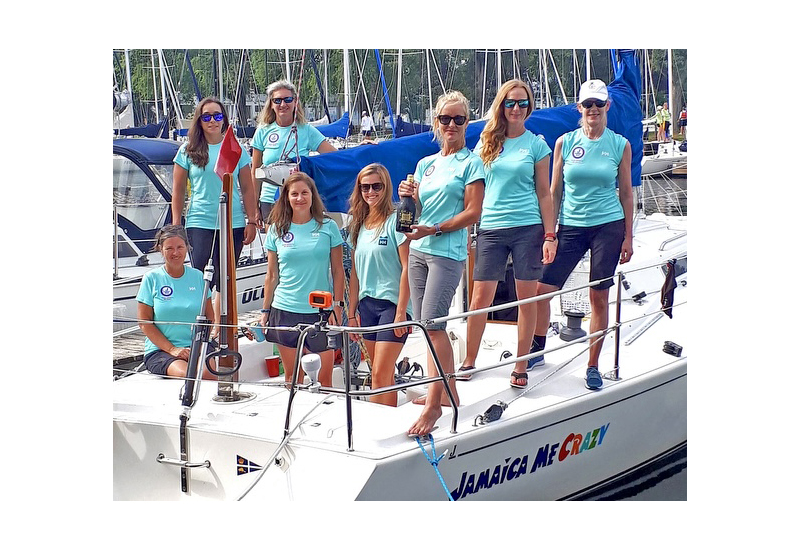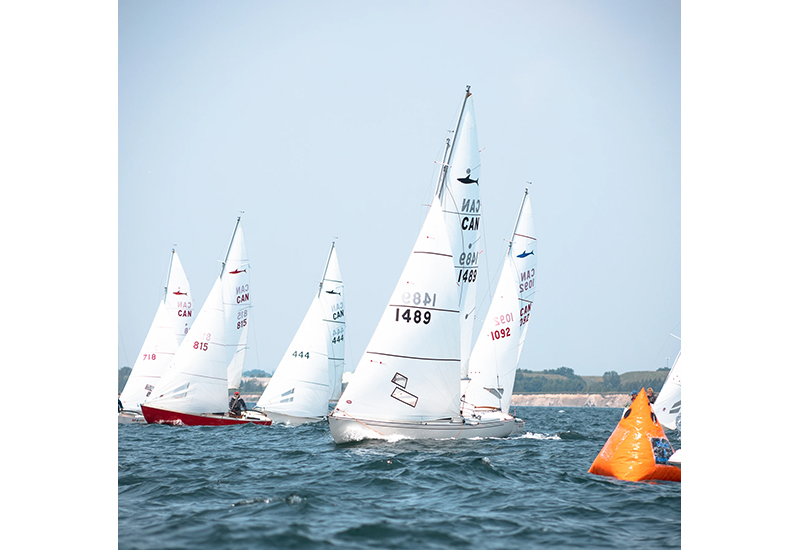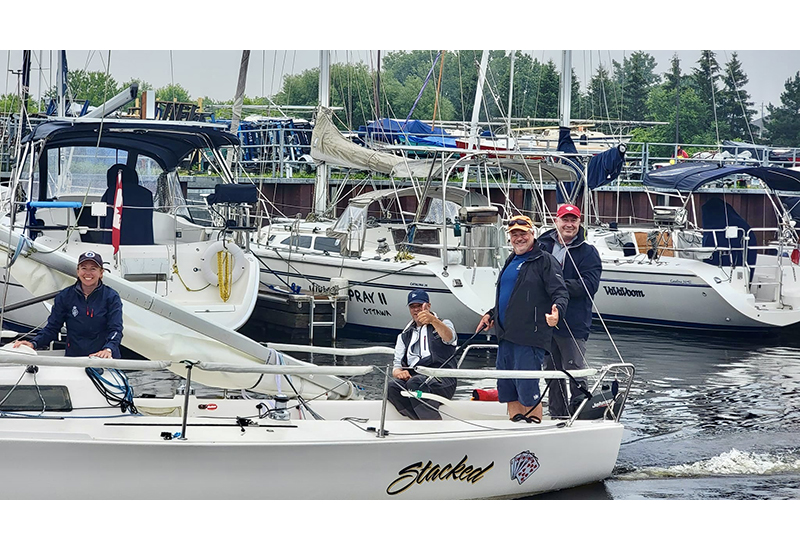Guide to Keel Maintenance – Part 2
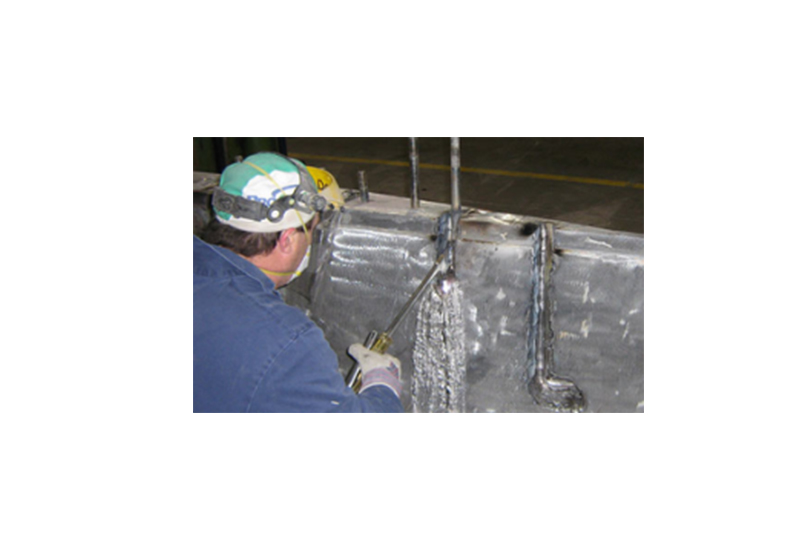
Dec 13, 2023
Part 1 here: sailingincanada.ca/tech/guide-to-keel-maintenance-part-1/
By William Souter, Custom Keel Sales & Design, MarsKeel Technology
Keel maintenance is like any other maintenance on the boat; it is a matter of keeping an eye out for any tell-tale signs of water, or corrosion or wear. If you can stay ahead of it, it is extremely unlikely that major maintenance concerns will arise.
Keel Bolt Deterioration
To return to the production process and how it reflects on the maintenance of the keel, both lead and iron, the other major concern is that of keel bolt damage or deterioration due to water. In general terms as boats age, the keel bolt condition is certainly something that you want to be aware of. The result of neglect can be costly at best and potentially life threatening. The problem arrives when you want to check for the bolt corrosion. Corrosion of the keel bolts is not easy to find. The majority of the corrosion will take place on the portion of the bolt that passes through the sump or hull, out of sight and reach for you but not the water.
The signs of deterioration of the keel bolts are generally the same for both lead and iron keels. There are however significant differences in the technique in repairing any concerns in iron and lead keels. “Will my keel bolts hold?” The first and most important thing I can say at this point is, if in doubt have them checked, by a capable and qualified yard or surveyor. Please do not take it upon yourself to assume the bolts are in good condition if there are any exterior signs of a problem.
The most common signs that there is some kind of a concern with the keel bolts are:
- Unexplained water in the bilge, reappearing over time after it was dried out.
- NOTE: The water could be coming from a number of other sources that have nothing to do with the keel; they should be checked before a concern with the keel is considered. Such non keel related issues are,
- Rainwater coming down the mast and into the bilge.
- A leaking deck fitting or opening port or hatch.
- The stuffing box leaking.
- A through hull or plumbing problem.
- NOTE: The water could be coming from a number of other sources that have nothing to do with the keel; they should be checked before a concern with the keel is considered. Such non keel related issues are,
Concerns that point to a keel concern.
- Loose keel bolt nuts.
- Corrosion stains around the nuts in the bilge. This maybe the result of long term water standing in the bilge, or a leak through the hull keel joint. If the above have been ruled out and water seeps in around the keel bolts there is a concern.
- When the boat is being hauled or moved does the hull keel joint open, is water weeping from it. Signs of concern with the keel bolts
- The keel wiggles on the sump when the weight is off it during haul-out or launch. But the keel should not move independent of the hull or sump.
- Corrosion trails on the outside of the keel. Even Stainless Steel will corrode, especially in the anaerobic environment around the bolts.
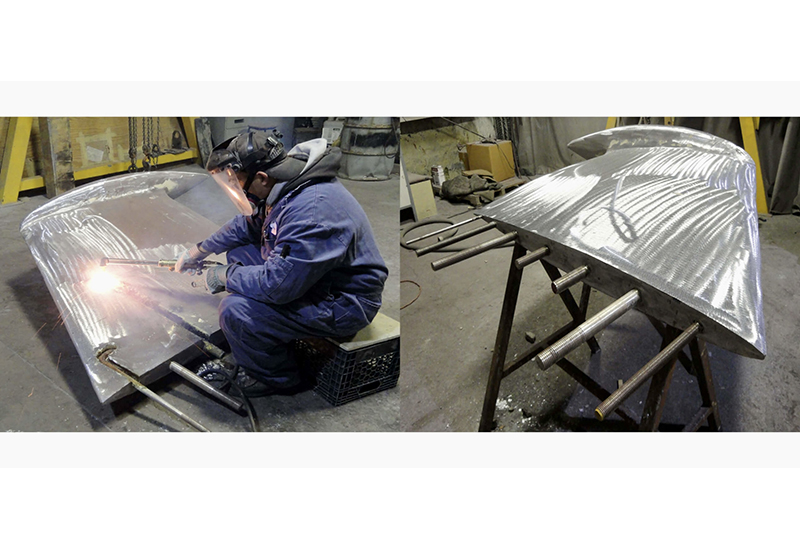
Inspection Method
You may be able to see some evidence of the corrosion by removing a keel bolt nut and the washer or backing plate but remember that unless you are able to retighten the nut to the required torque do not disturb it. Ask a capable yard to check under the nut and washer plate for you.
Solutions
The simplest solution to the offered list of concerns could be as simple as having the keel bolt nuts tightened again. The torque specifications for each bolt should be available from the builder. The concern that we make boat owners and yards aware of is, if you see any of the above conditions even doing something as seemingly simple as retightening a nut the keel bolt might break off or might start it to spin in the casting, (that would be our friend Murphy again.) Therefore, if there are any visual signs of further damage, be aware this might only be the start of the repair. Before you put a wrench on the nuts it is a very good practice to ask an experienced and qualified person to see if it will solve the problem or make it worse. As a boat builder I was always nervous about putting a wrench on a keel bolt. It was only done after the bolts and boat were checked carefully for warning signs of failure.
For both lead and iron keels if there are sufficient signs of concern as listed above, a more comprehensive inspection may be warranted. This usually means that the keel has to be loosened and lowered for a further visual inspection. This will cost additional labour and possible equipment time, travel lift usage. If the keel is truly in distress, loss, (once the keel is stabilized in a brace, the nuts removed and the boat lifted) the keel will drop right down with little effort and the inspection and a repair process can start. Otherwise, the removal work could take a day or more and a lot of blood sweat and tears. When I worked at C&C Yachts in Niagara-on-the-Lake, I saw a keel being replaced on the shop floor, it took two men working carefully but hard and steadily 8 hours to get a keel on a new C&C 37 to move. The best outcome is that the bolts are found to be in good condition and the keel can be re-bedded and tightened into place. In a matter of a day or so your boat is back in one piece with a newly sealed hull keel joint.
If you have an iron keel and a bolt is found to be loss or corroded and requires replacement, it requires great care and skill, nothing that should be attempted by the owner. The bolt or bolts in question might turn out, but probably will not; you know Murphy’s Law will bite us here. The replacement process should be done by a skilled and qualified person, meaning very likely that the old studs will have to be milled out, requiring a machine shop. The shop should also check the condition of the threads in the casting to ensure that they can hold the required load. Once all it found or made satisfactory a new stud is installed and the keel can be reinstalled on the boat.
In the case of a lead keel, MarsKeel can assist you. We have the ability to replace the completely the corroded keel bolt in the existing keel casting. I do not suggest that either a yard or an owner attempt this repair. If it goes wrong tremendous damage can be done to the keel, or worse a complete refusing is not done weakening the keel. A brief outline of the repair procedure is,
- The keel is removed from the boat, and sent to MarsKeel. This done for a number of reasons other than sending it to us.
- To protect the rest of the boat from the heat of melting lead, the amount of heat required would very likely burn the sump of the boat.
- For safety reasons, the act of removing the keel bolts makes the boat unable to balance the keel in the vertical position.
- Environmental precautions, we have all the required procedures in place to deal with the use of lead, most yards do not.
- Access to the bolts, the repair procedure, removal and replacement, requires that the keel be sitting horizontally.
- The existing keel bolts are removed from the keel.
- A new keel bolt is fabricated.
- The keel bolt may be simply “j” hooked, or have a nut and washer welded to its end, or the bolts maybe originally caged together. Whatever the circumstances it will be duplicated for the new keel bolt.
- The new bolt(s) are fitted into the casting in the same place as the old one. This is possible because during the removal process undisturbed portion of the lead creates a saddle to hold the new bolt.
- New lead is refused over the new bolt, locking it into the keel. This is a very important and difficult step, the ability to refuse lead without destroying the keel.
- The entire keel, both sides is re-faired, and coated with the required number of coats of epoxy barrier coat. The root cord is checked and the keel is prepared for re-installation on the boat.
The repaired keel will be as good or better than it was originally. The benefits of this style of keel bolt replacement are,
- There is no need for a new keel. Very important because many of the older keel molds and even the drawings of the keels have been long since destroyed, making production of a replacement keel as expensive as a fully custom keel. A price that is usually too high for older boats.
- The replaced keel bolt will be as strong and secure as the original.
- The keel bolt material can be up graded to a better Stainless Steel.
- Any unseen bolt deterioration is removed.
I have heard of other fixes for damaged keel bolts, with the keel left on the boat and additional holes are drilled through the glass into the lead and a new stud is then installed. I would not recommend it for anything other then an emergency fit to get you to a yard that can repair the keel properly.
Casting Deterioration
The consequence of not dealing effectively with a keel bolt issue can lead to casting failure. This is a long and almost undetectable problem, until it is almost too late. The cause is water and the winter freeze that the boaters in Northern climates deal with every year.
We winterize our on-board systems, the engine, the water systems etc. but we can’t winterize the keel. What happens is that over time if the hull keel joint is opened water will find its way to the keel bolts. You can see the water weeping out of the joint as the boat sits in the slings after being hauled or after it is set in the cradle or stands. Once the water has access to the bolts it will begin the corrosion but it will also begin working its way down the bolt. With each freeze cycle the now trapped water pushes on the casting from the inside. Not unlike water pushing out frost plugs on an engine block. After time this action weakens the connection between the casting and the keel bolt.
In a lead casting the result can be seen as a swelling in the keel surface, the lead is being pushed out by the water, ice. In an iron keel I have never seen the same kind of swelling; it shows as a crack in the casting, and a rust line. The end result of this can be the keel bolts are loose or start to spin when they are tightened. The good news is that if it is found early enough or if the damage is not too great the bolt can be replaced and the keel repaired.

